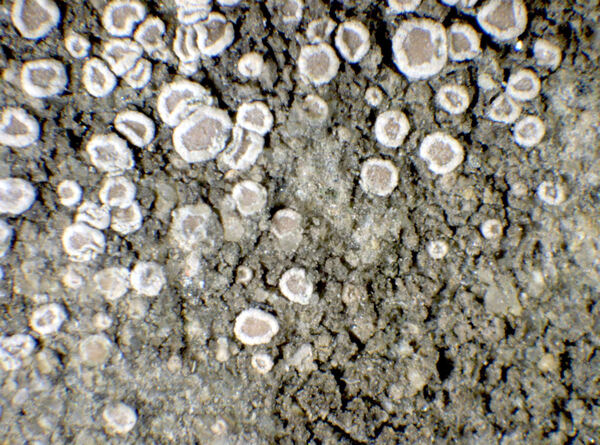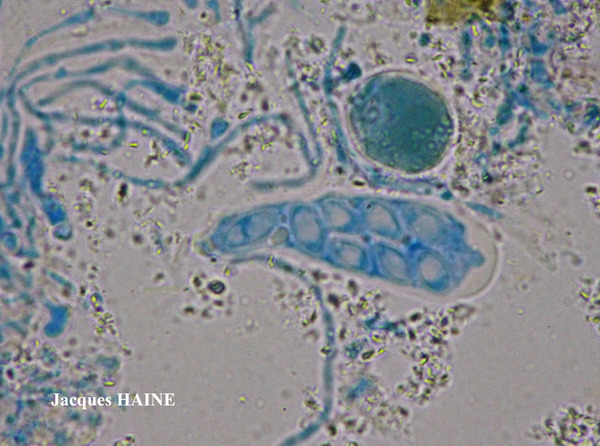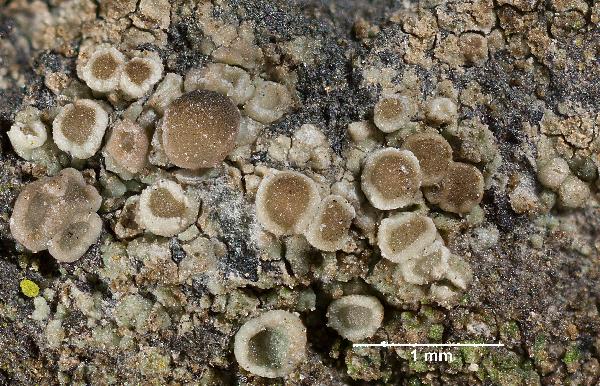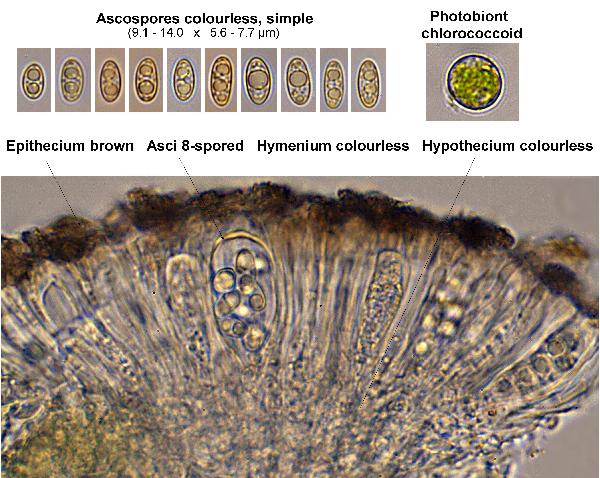Polyozosia dispersa (Pers.) S.Y. Kondr., Lőkös & Farkas
in Kondratyuk & al., Acta Bot. Hung., 61, 1-2: 156, 2019. Basionym: Lichen dispersus Pers. - Ann. Bot. (Usteri), 7: 27, 1794.
Synonyms: Lecanora dispersa (Pers.) Röhl.; Lecanora umbrina auct. p.p.; Myriolecis dispersa (Pers.) Śliwa, Zhao Xin & Lumbsch; Patellaria caesioalba var. dispersa (Pers.) Trevis.
Distribution: N - VG (Castello 2002, Martellos & Castello 2004), Frl (Nimis & Salvadori 1998, Nascimbene & Salvadori 2008, Nascimbene & al. 2009b), Ven (Caniglia & al. 1993, 1999, Nimis 1994, Salvadori & al. 1994, Nascimbene & Caniglia 2003c, Nascimbene 2005c, 2008, Nascimbene & Marini 2007, Nascimbene & Salvadori 2008), TAA (Nascimbene 2003, 2005b, 2008b, Nascimbene & al. 2005, 2006, 2022), Lomb (Valcuvia & al. 2003, Valcuvia & Truzzi 2007b), Piem (Caniglia & al. 1992, Isocrono & Falletti 1999, Isocrono & al. 2003, Piervittori 2003, Favero-Longo & al. 2009b, 2015, Gazzano & al. 2009b, Giordani & al. 2014, Morando & al. 2016), VA (Piervittori & Isocrono 1999, Piervittori & al. 2001), Emil (Nimis & al. 1996, Valcuvia & Savino 2000, Bouvet 2008, Fariselli & al. 2020), Lig (Valcuvia & al. 2000, Gazzano & al. 2009, Giordani & al. 2016). C - Tosc (Brackel 2015, Pinna & al. 2018), Marc (Nimis & Tretiach 1999), Umb (Nimis & Tretiach 1999, Panfili 2000, 2000b, 2007, Ravera & al. 2006, Genovesi 2011), Laz (Bartoli 1997b, Capponi & al. 2005, Pietrini & al. 2008, Genovesi & al. 2011, 2012, Roccardi 2011, Brackel 2015), Abr (Nimis & Tretiach 1999, Caporale & al. 2016, Gheza & al. 2021), Mol (Garofalo & al. 1999, Nimis & Tretiach, 1999, 2004, Caporale & al. 2008, Ravera & al. 2009, Genovesi & Ravera 2014, Brackel 2020), Sar (Monte 1993, Nöske 2000, Zedda 2002, 2002b, Rizzi & al. 2011, Giordani & al. 2013, Cossu 2013, Cossu & al. 2015, Neuwirth 2018). S - Camp (Garofalo & al. 1999, 2010, Ricciardi & al. 2000, Aprile & al. 2002, 2003b, Nimis & Tretiach 2004, Catalano & al. 2016), Pugl (Nimis & Tretiach 1999, Durini & Medagli 2002, 2004, Gianfreda & Matino 2020), Bas (Bartoli & Puntillo 1998, Nimis & Tretiach 1999, Brackel 2011), Cal (Puntillo 1996), Si (Nimis & al. 1994, Ottonello & Salone 1994, Ottonello & al. 1994, 2011, Monte & Ferrari 1996, Ottonello 1996, Poli & al. 1997, Ottonello & Romano 1997, Schicchi & al. 1997, Grillo 1998, Caniglia & Grillo 2001, Grillo & al. 2001, 2002, Grillo & Caniglia 2004, Brackel 2008b, 2008c, Gianguzzi & al. 2009, Cataldo & Cannavò 2014, Campisi & al. 2020, Ravera & al. 2023b).
Description: Thallus crustose, endosubstratic, or of inconspicuous granules around the apothecia, usually consisting of the apothecial margin only. Apothecia lecanorine, sessile and constricted at base, 0.3-1 mm across, with a slightly concave to finally slightly convex, yellowish grey, brown or almost black, sometimes slightly pruinose disc, and a white, more or less prominent, smooth, entire, thalline margin. Thalline exciple corticate, obscured by granules insoluble in K, but soluble in N; epithecium yellowish brown, with fine granules insoluble in K and in N (sometimes with an epipsamma insoluble in K but soluble in N); hymenium colourless or pale yellow; paraphyses slender, sparingly branched throughout, with few anastomoses, not expanded at apex, coherent in K; hypothecium colourless, often with some granules. Asci 8-spored, elongate-clavate, very thin-walled, with a K/I+ blue, tall tholus penetrated by a faintly amyloid apical cushion, the wall K/I-, surrounded by a K/I+ blue outer layer, Lecanora-type. Ascospores 1-celled, hyaline, ellipsoid, 8-12(-14) x (3-)4.5-6(-7) μm. Photobiont chlorococcoid. Spot tests: thallus (apothecial margin) K-, C-, KC-, P- or rarely (apothecial margin only) P+ orange. Chemistry: usually without lichen substances; some samples with 2.7-dichlorlichexanthone and pannarin in apothecial margin. Note: most frequent in urban areas (e.g. on monuments, mortar walls, asbestos-cement) up to the montane belt; records from natural habitats and from upland areas may refer to other species, especially to P. semipallida.
Growth form: Crustose
Substrata: rocks
Photobiont: green algae other than Trentepohlia
Reproductive strategy: mainly sexual
Commonnes-rarity: (info)
Alpine belt: absent
Subalpine belt: absent
Oromediterranean belt: absent
Montane belt: rather rare
Submediterranean belt: extremely common
Padanian area: common
Humid submediterranean belt: extremely common
Humid mediterranean belt: common
Dry mediterranean belt: rather rare
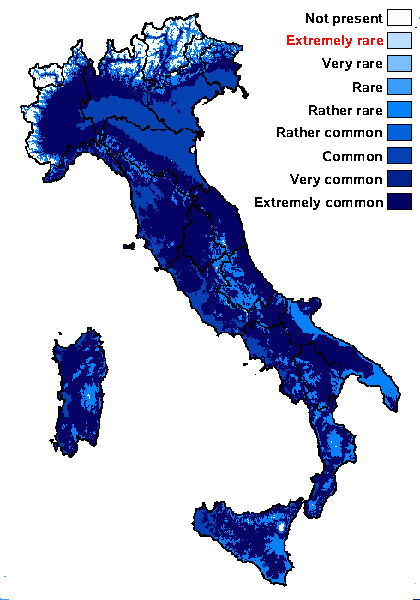
Predictive model
Herbarium samples
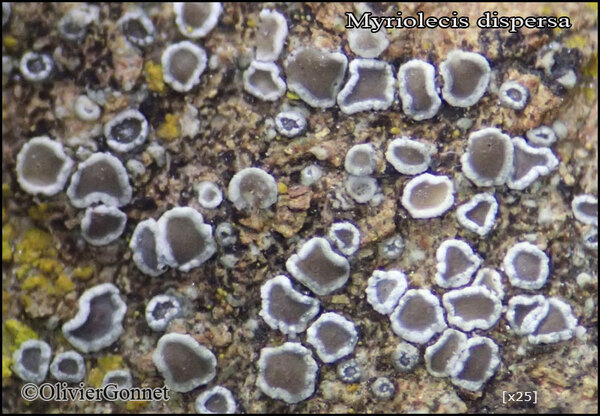
Courtesy Danièle et Olivier Gonnet - Source: https://www.afl-lichenologie.fr/Photos_AFL/Photos_AFL_M/Texte_M/Myriolecis_dispersa.htm
France, Butte calcaire, Chapelle de Jausiers, alt. : 1310 m - Alpes-de-Haute-Provence
21/7/2014
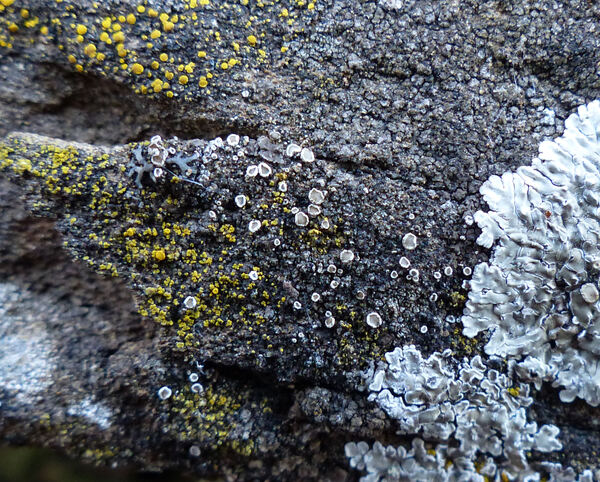

Andrea Moro; Owner: Department of Life Sciences, University of Trieste
Italy, Friuli Venezia Giulia, Trieste, Trieste, Conconello
14/02/2017
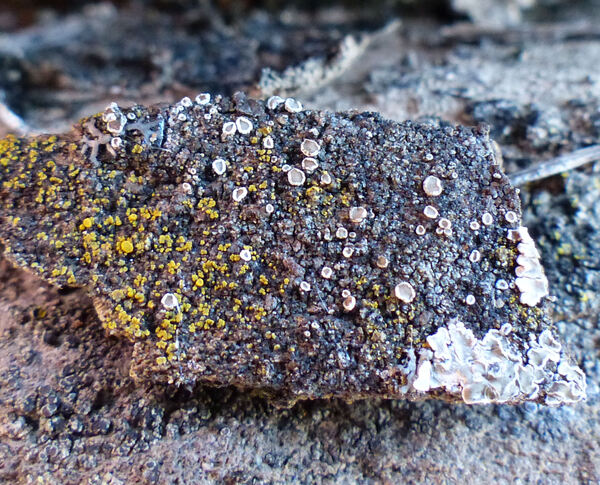

Andrea Moro; Owner: Department of Life Sciences, University of Trieste
Italy, Friuli Venezia Giulia, Trieste, Trieste, Conconello
14/02/2017
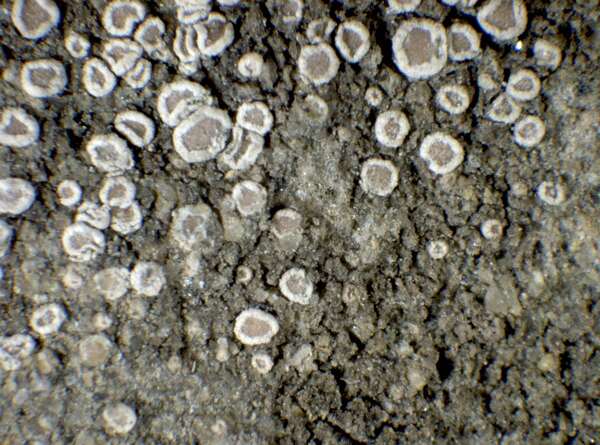

P.L. Nimis; Owner: Department of Life Sciences, University of Trieste
Herbarium: TSB (10933)
2001/12/08
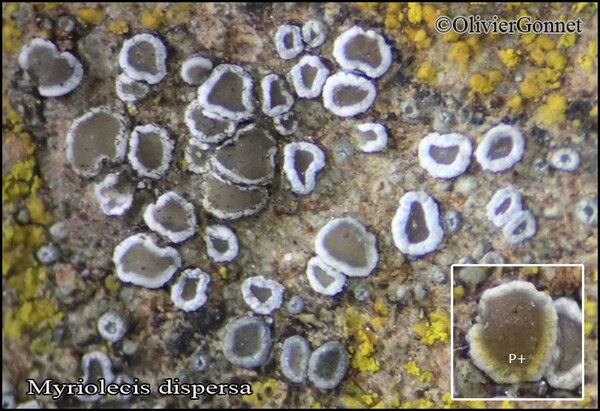
Courtesy Danièle et Olivier Gonnet - Source: https://www.afl-lichenologie.fr/Photos_AFL/Photos_AFL_M/Texte_M/Myriolecis_dispersa.htm
France, Butte calcaire, Chapelle de Jausiers, alt. : 1310 m - Alpes-de-Haute-Provence
21/7/2014
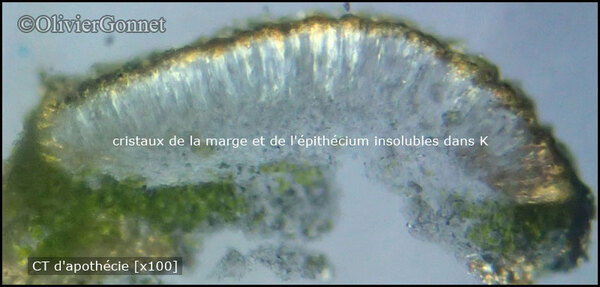
Courtesy Danièle et Olivier Gonnet - Source: https://www.afl-lichenologie.fr/Photos_AFL/Photos_AFL_M/Texte_M/Myriolecis_dispersa.htm
France, Butte calcaire, Chapelle de Jausiers, alt. : 1310 m - Alpes-de-Haute-Provence
21/7/2014
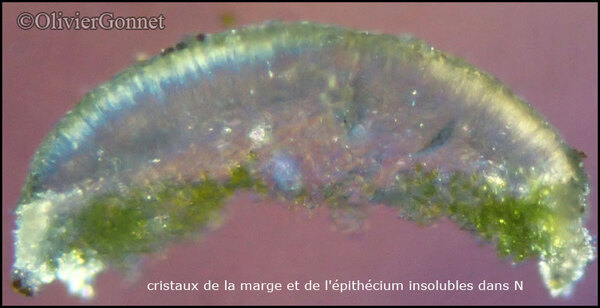
Courtesy Danièle et Olivier Gonnet - Source: https://www.afl-lichenologie.fr/Photos_AFL/Photos_AFL_M/Texte_M/Myriolecis_dispersa.htm
France, Butte calcaire, Chapelle de Jausiers, alt. : 1310 m - Alpes-de-Haute-Provence
21/7/2014
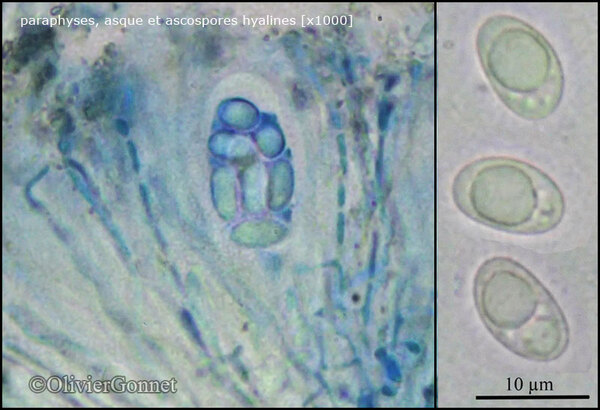
Courtesy Danièle et Olivier Gonnet - Source: https://www.afl-lichenologie.fr/Photos_AFL/Photos_AFL_M/Texte_M/Myriolecis_dispersa.htm
France, Butte calcaire, Chapelle de Jausiers, alt. : 1310 m - Alpes-de-Haute-Provence
21/7/2014
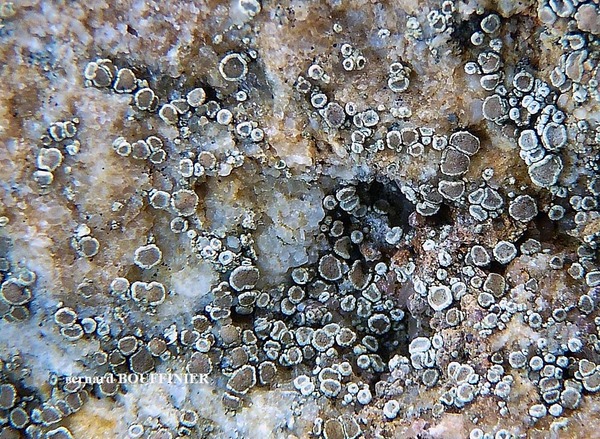
Bernard Bouffinier - Source: http://www.lichensmaritimes.org/index.php?task=fiche&lichen=297&lang=en
France, Le Toulinguet

Bernard Bouffinier - Source: http://www.lichensmaritimes.org/index.php?task=fiche&lichen=297&lang=en
France, L'Aber
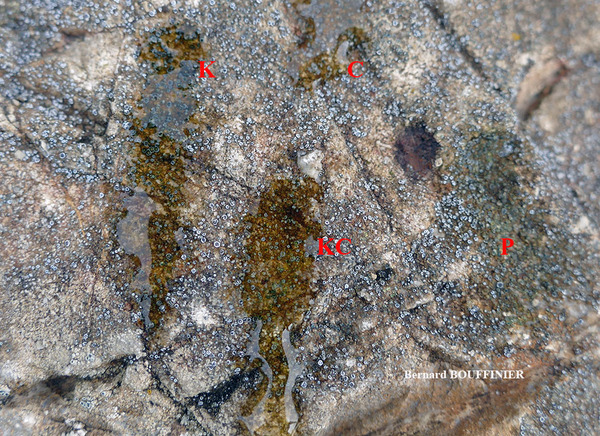
Bernard Bouffinier - Source: http://www.lichensmaritimes.org/index.php?task=fiche&lichen=297&lang=en
France, L'Aber
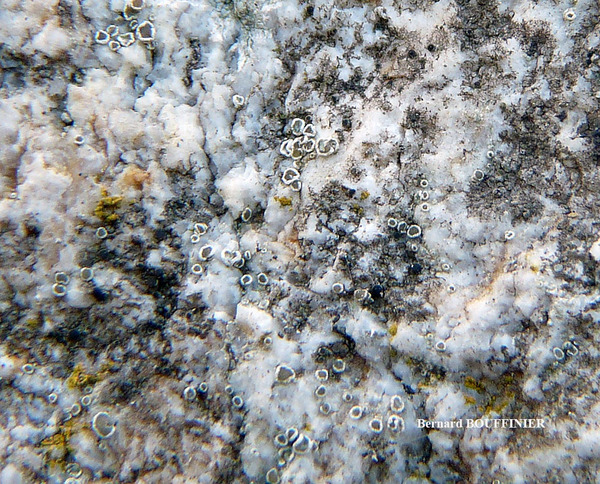
Bernard Bouffinier - Source: http://www.lichensmaritimes.org/index.php?task=fiche&lichen=297&lang=en
France, Le Passage, Plougastel
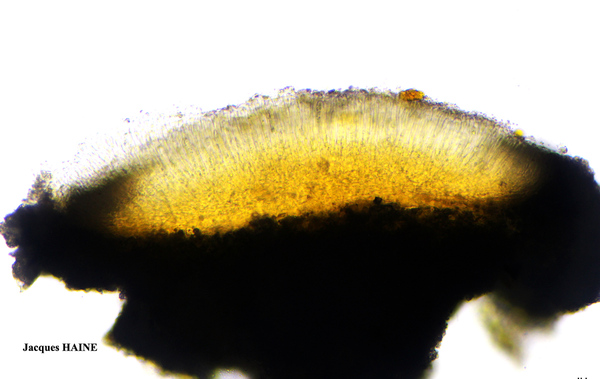
Jacques Haine - Source: http://www.lichensmaritimes.org/index.php?task=fiche&lichen=297&lang=en
France, Ardennes
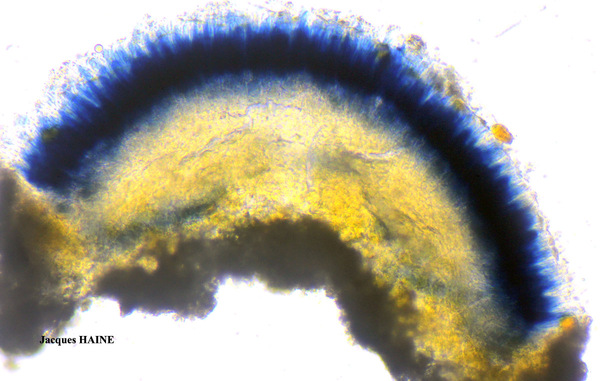
Jacques Haine - Source: http://www.lichensmaritimes.org/index.php?task=fiche&lichen=297&lang=en
France, Ardennes
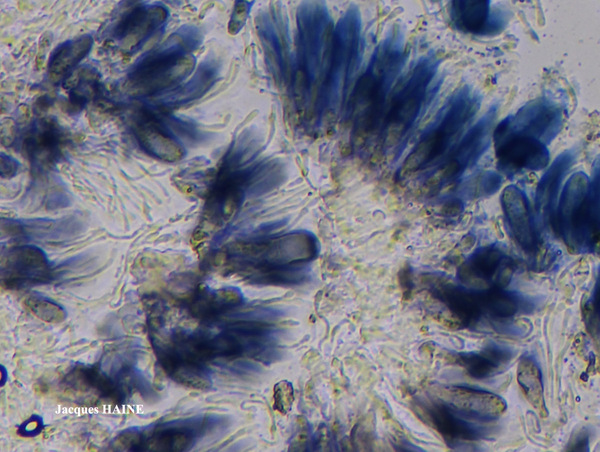
Jacques Haine - Source: http://www.lichensmaritimes.org/index.php?task=fiche&lichen=297&lang=en
France, Ardennes
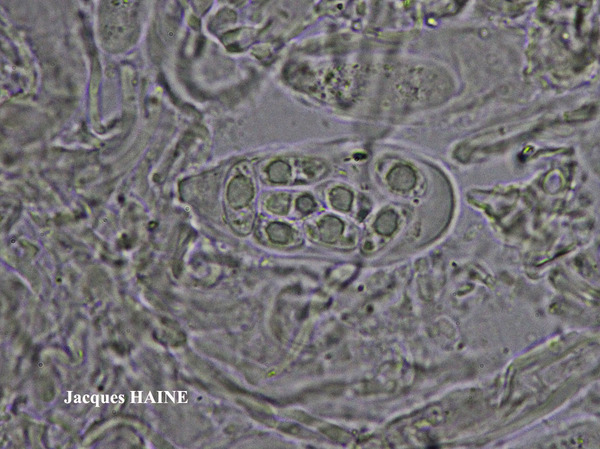
Jacques Haine - Source: http://www.lichensmaritimes.org/index.php?task=fiche&lichen=297&lang=en
France, Ardennes
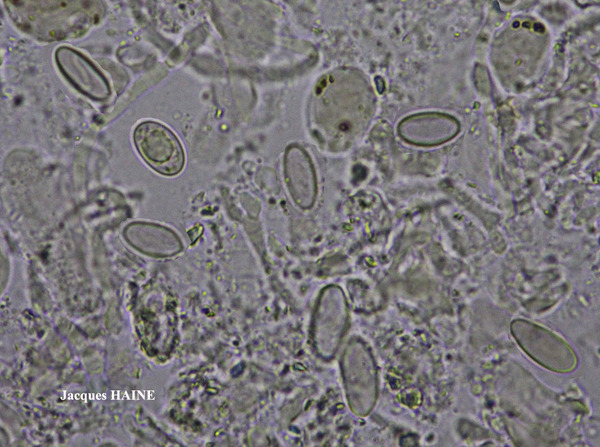
Jacques Haine - Source: http://www.lichensmaritimes.org/index.php?task=fiche&lichen=297&lang=en
France, Ardennes
Growth form: Crustose
Substrata: rocks
Photobiont: green algae other than Trentepohlia
Reproductive strategy: mainly sexual
Commonnes-rarity: (info)
Alpine belt: absent
Subalpine belt: absent
Oromediterranean belt: absent
Montane belt: rather rare
Submediterranean belt: extremely common
Padanian area: common
Humid submediterranean belt: extremely common
Humid mediterranean belt: common
Dry mediterranean belt: rather rare

Predictive model
| Herbarium samples |

Courtesy Danièle et Olivier Gonnet - Source: https://www.afl-lichenologie.fr/Photos_AFL/Photos_AFL_M/Texte_M/Myriolecis_dispersa.htm
France, Butte calcaire, Chapelle de Jausiers, alt. : 1310 m - Alpes-de-Haute-Provence
21/7/2014


Andrea Moro; Owner: Department of Life Sciences, University of Trieste
Italy, Friuli Venezia Giulia, Trieste, Trieste, Conconello
14/02/2017


Andrea Moro; Owner: Department of Life Sciences, University of Trieste
Italy, Friuli Venezia Giulia, Trieste, Trieste, Conconello
14/02/2017


P.L. Nimis; Owner: Department of Life Sciences, University of Trieste
Herbarium: TSB (10933)
2001/12/08

Courtesy Danièle et Olivier Gonnet - Source: https://www.afl-lichenologie.fr/Photos_AFL/Photos_AFL_M/Texte_M/Myriolecis_dispersa.htm
France, Butte calcaire, Chapelle de Jausiers, alt. : 1310 m - Alpes-de-Haute-Provence
21/7/2014

Courtesy Danièle et Olivier Gonnet - Source: https://www.afl-lichenologie.fr/Photos_AFL/Photos_AFL_M/Texte_M/Myriolecis_dispersa.htm
France, Butte calcaire, Chapelle de Jausiers, alt. : 1310 m - Alpes-de-Haute-Provence
21/7/2014

Courtesy Danièle et Olivier Gonnet - Source: https://www.afl-lichenologie.fr/Photos_AFL/Photos_AFL_M/Texte_M/Myriolecis_dispersa.htm
France, Butte calcaire, Chapelle de Jausiers, alt. : 1310 m - Alpes-de-Haute-Provence
21/7/2014

Courtesy Danièle et Olivier Gonnet - Source: https://www.afl-lichenologie.fr/Photos_AFL/Photos_AFL_M/Texte_M/Myriolecis_dispersa.htm
France, Butte calcaire, Chapelle de Jausiers, alt. : 1310 m - Alpes-de-Haute-Provence
21/7/2014

Bernard Bouffinier - Source: http://www.lichensmaritimes.org/index.php?task=fiche&lichen=297&lang=en
France, Le Toulinguet

Bernard Bouffinier - Source: http://www.lichensmaritimes.org/index.php?task=fiche&lichen=297&lang=en
France, L'Aber

Bernard Bouffinier - Source: http://www.lichensmaritimes.org/index.php?task=fiche&lichen=297&lang=en
France, L'Aber

Bernard Bouffinier - Source: http://www.lichensmaritimes.org/index.php?task=fiche&lichen=297&lang=en
France, Le Passage, Plougastel

Jacques Haine - Source: http://www.lichensmaritimes.org/index.php?task=fiche&lichen=297&lang=en
France, Ardennes

Jacques Haine - Source: http://www.lichensmaritimes.org/index.php?task=fiche&lichen=297&lang=en
France, Ardennes

Jacques Haine - Source: http://www.lichensmaritimes.org/index.php?task=fiche&lichen=297&lang=en
France, Ardennes

Jacques Haine - Source: http://www.lichensmaritimes.org/index.php?task=fiche&lichen=297&lang=en
France, Ardennes

